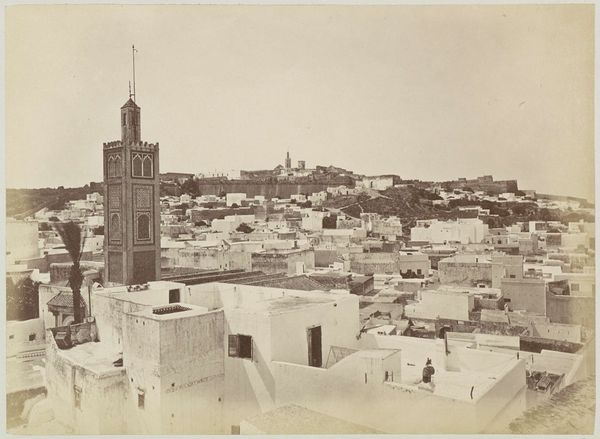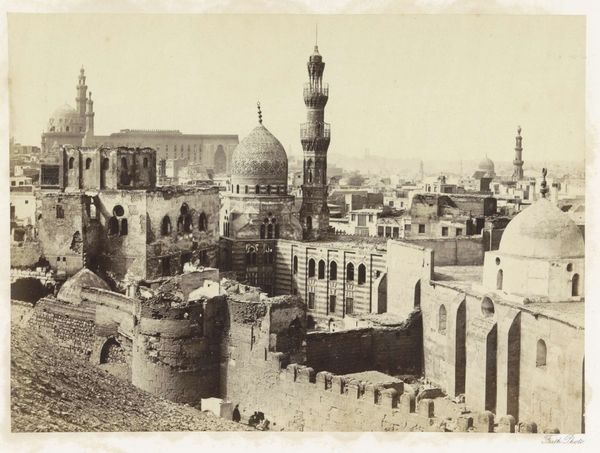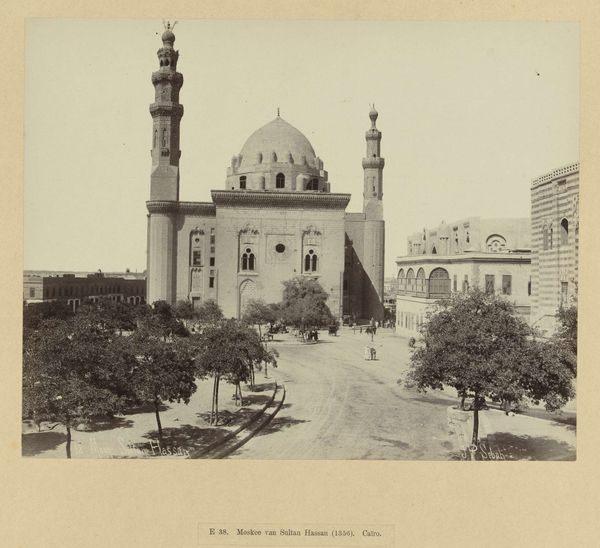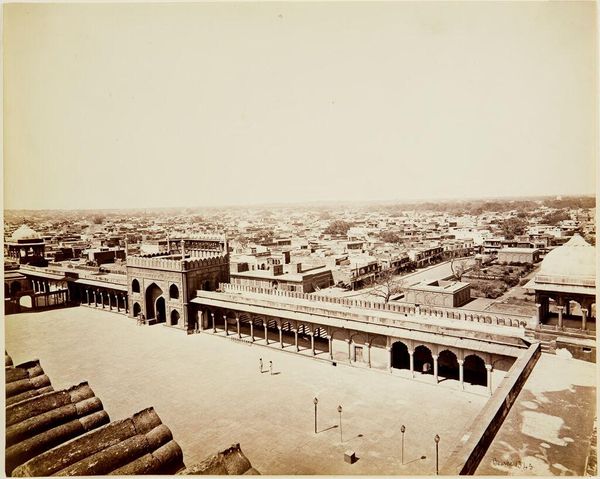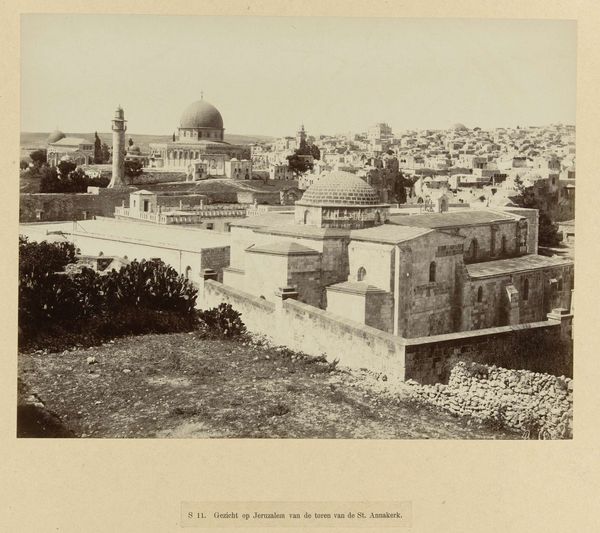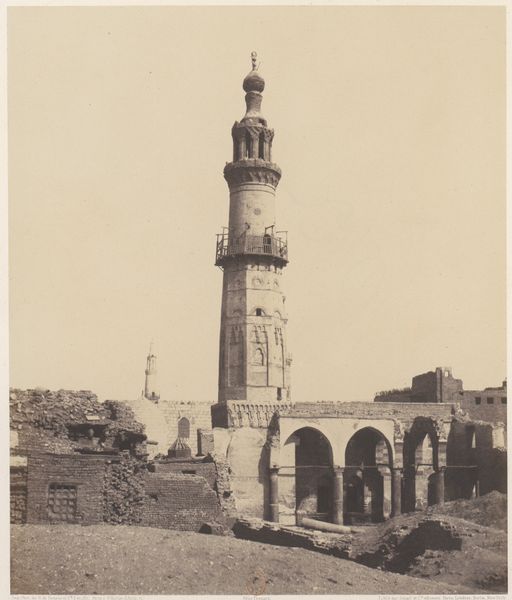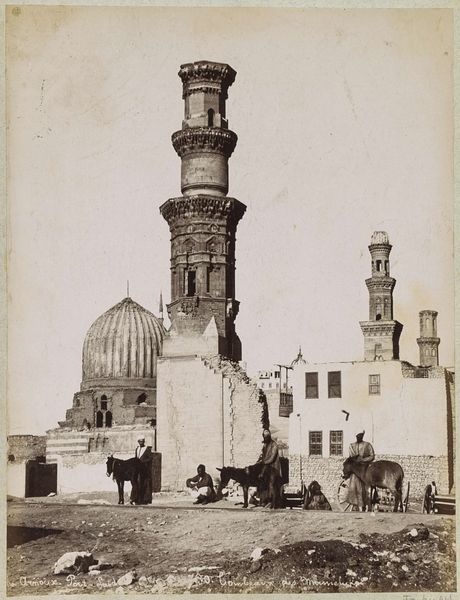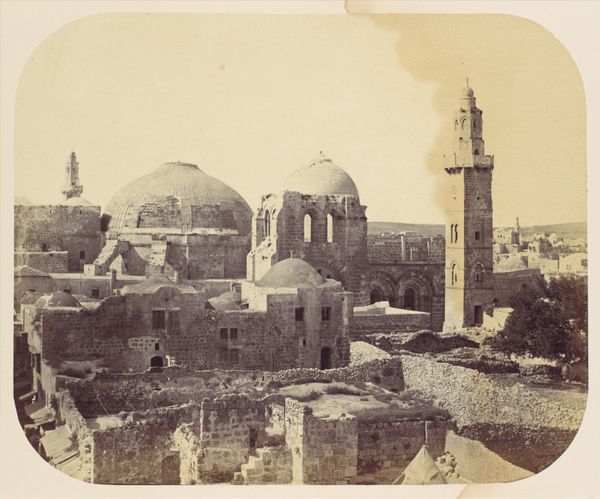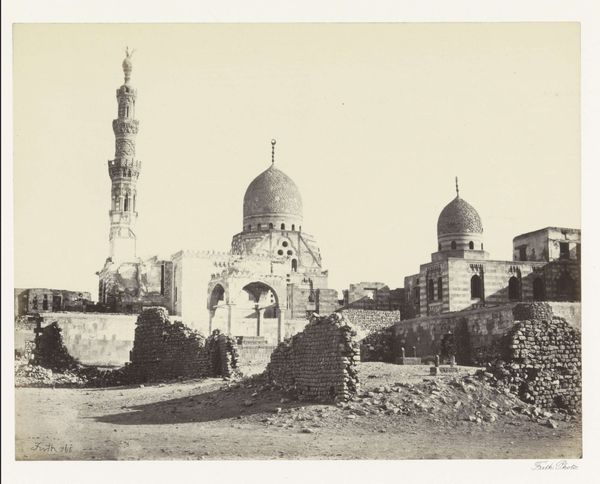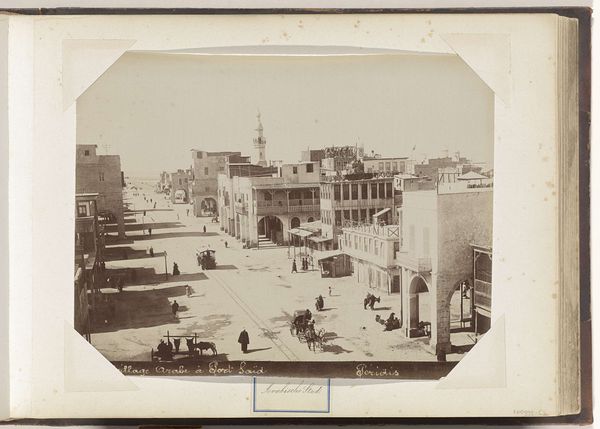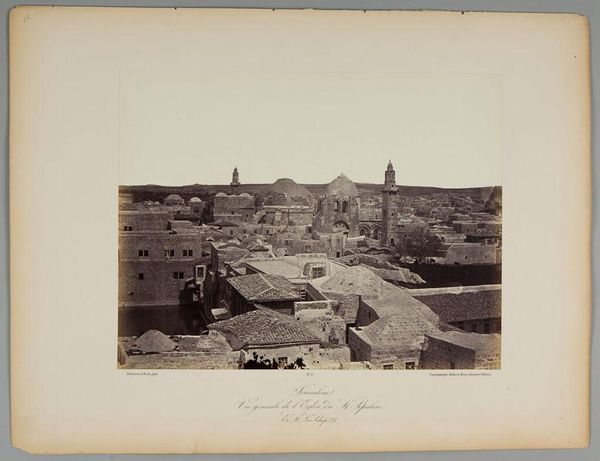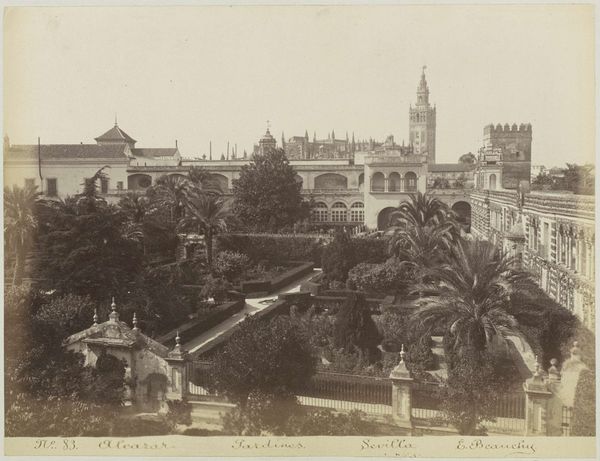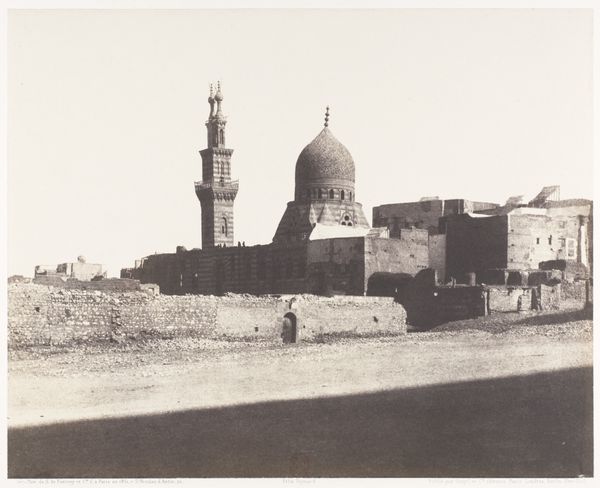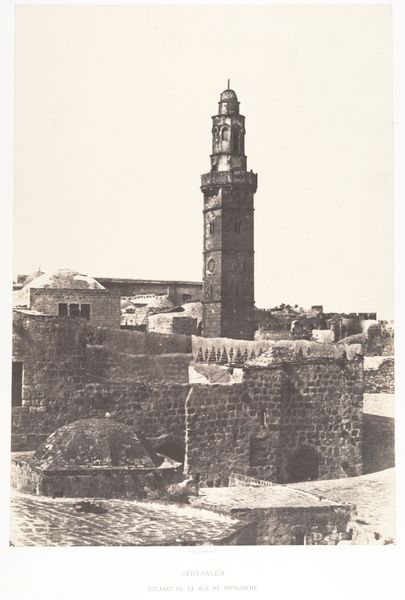
Gezicht op Damascus, met de minaret van de Grote Moskee op de voorgrond c. 1867 - 1877
0:00
0:00
print, photography, albumen-print
#
16_19th-century
# print
#
landscape
#
archive photography
#
photography
#
historical photography
#
orientalism
#
19th century
#
cityscape
#
islamic-art
#
albumen-print
Dimensions: height 277 mm, width 220 mm, height 469 mm, width 558 mm
Copyright: Rijks Museum: Open Domain
Editor: Here we have Félix Bonfils' "View of Damascus, with the minaret of the Great Mosque in the foreground," an albumen print likely created between 1867 and 1877. I’m struck by the almost topographic nature of the image; it feels like an attempt to document every building within the frame. What's your take on this photograph? Curator: I see a fascinating tension between art and commodity. This albumen print, with its meticulous detail, was produced within a specific economic framework. Photography at this time became increasingly industrialized, creating "views" for consumption. Consider the labor involved: from the photographer's framing to the darkroom processing, and then its circulation through tourist networks. Editor: So you’re suggesting it's less about artistic expression and more about a production line? Curator: Not exclusively, but it's crucial to examine the materiality and context. Albumen prints were fashionable precisely because of their detail, a quality achieved through complex chemical processes and labor-intensive techniques. Think about the accessibility – or lack thereof – to photography at this time. Who possessed the capital to produce and consume these images, and how did that shape the narratives they presented? The print itself becomes a product, packaged for Western audiences eager to consume images of the "Orient." Does that impact your understanding? Editor: It definitely does. I was focused on the composition but didn't consider who was buying and selling these views. Curator: Exactly. By understanding the economic and material realities of its production, we gain insight into the power dynamics at play and how photography shaped perceptions of distant places and people. Editor: This has really changed my perspective, moving beyond just admiring the image to understanding its social and economic implications. Thanks for your insights. Curator: My pleasure. It’s through understanding the material conditions that art truly comes alive.
Comments
No comments
Be the first to comment and join the conversation on the ultimate creative platform.
